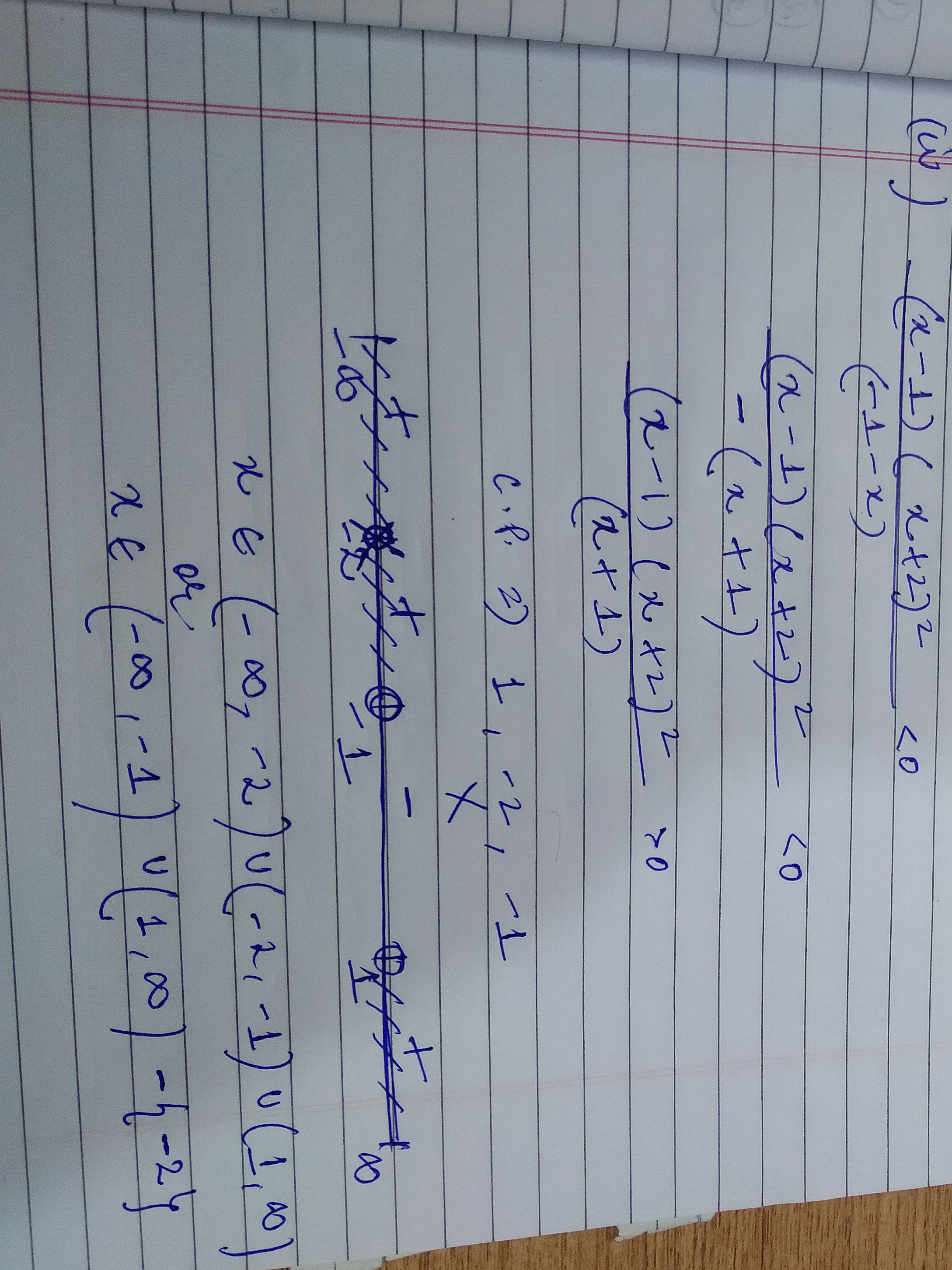Question
Question: $\frac{(x-1)(x+2)^2}{(1-x)}<0$...
(1−x)(x−1)(x+2)2<0

Answer
x∈(−∞,−2)∪(−2,1)∪(1,∞)
Explanation
Solution
We are asked to solve the inequality (1−x)(x−1)(x+2)2<0. We can rewrite the denominator 1−x as −(x−1). So the inequality becomes −(x−1)(x−1)(x+2)2<0. For x=1, we can cancel the term (x−1) from the numerator and denominator. This simplifies the inequality to −1(x+2)2<0, which is equivalent to −(x+2)2<0. Multiplying by −1 and reversing the inequality sign, we get (x+2)2>0. This inequality is true for all real numbers x except when x+2=0, which means x=−2. We also must consider the restriction from the original denominator that 1−x=0, so x=1. Therefore, the solution set includes all real numbers except x=−2 and x=1. In interval notation, this is x∈(−∞,−2)∪(−2,1)∪(1,∞).
